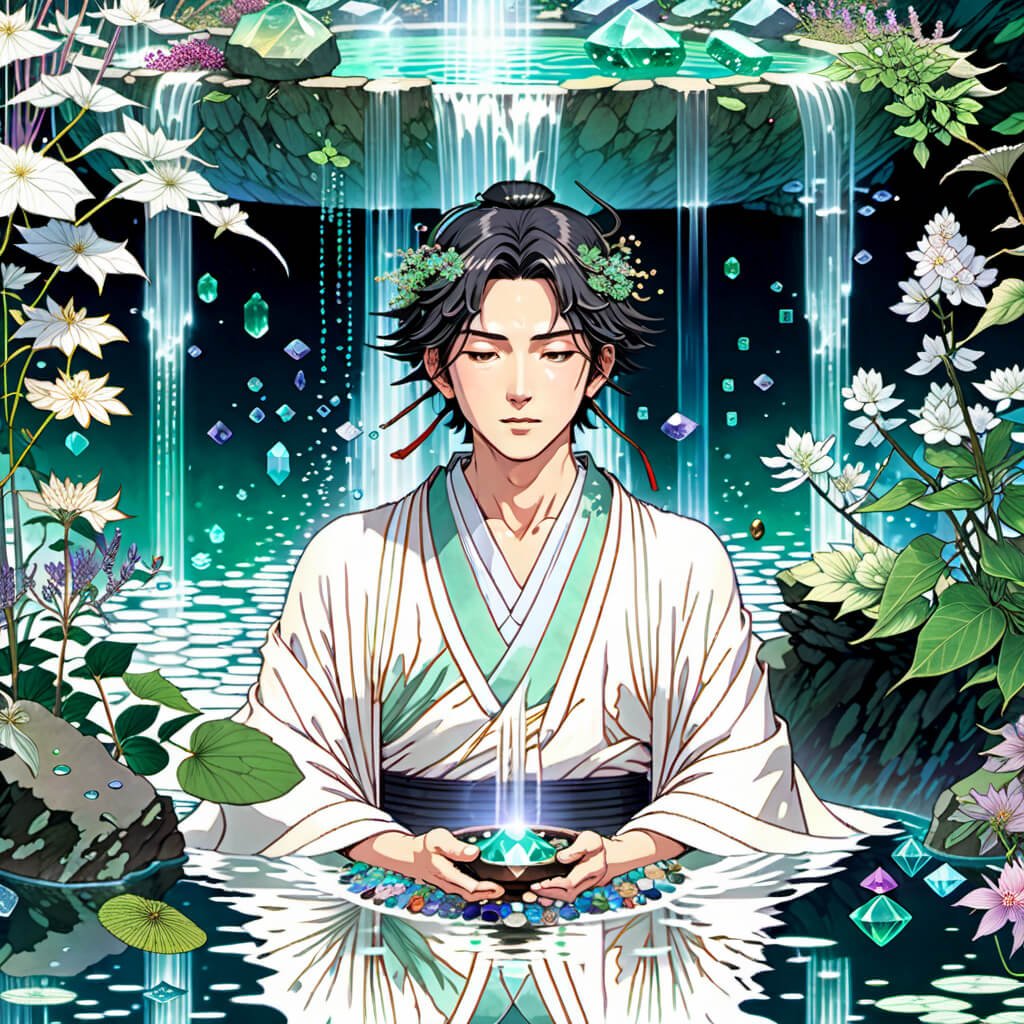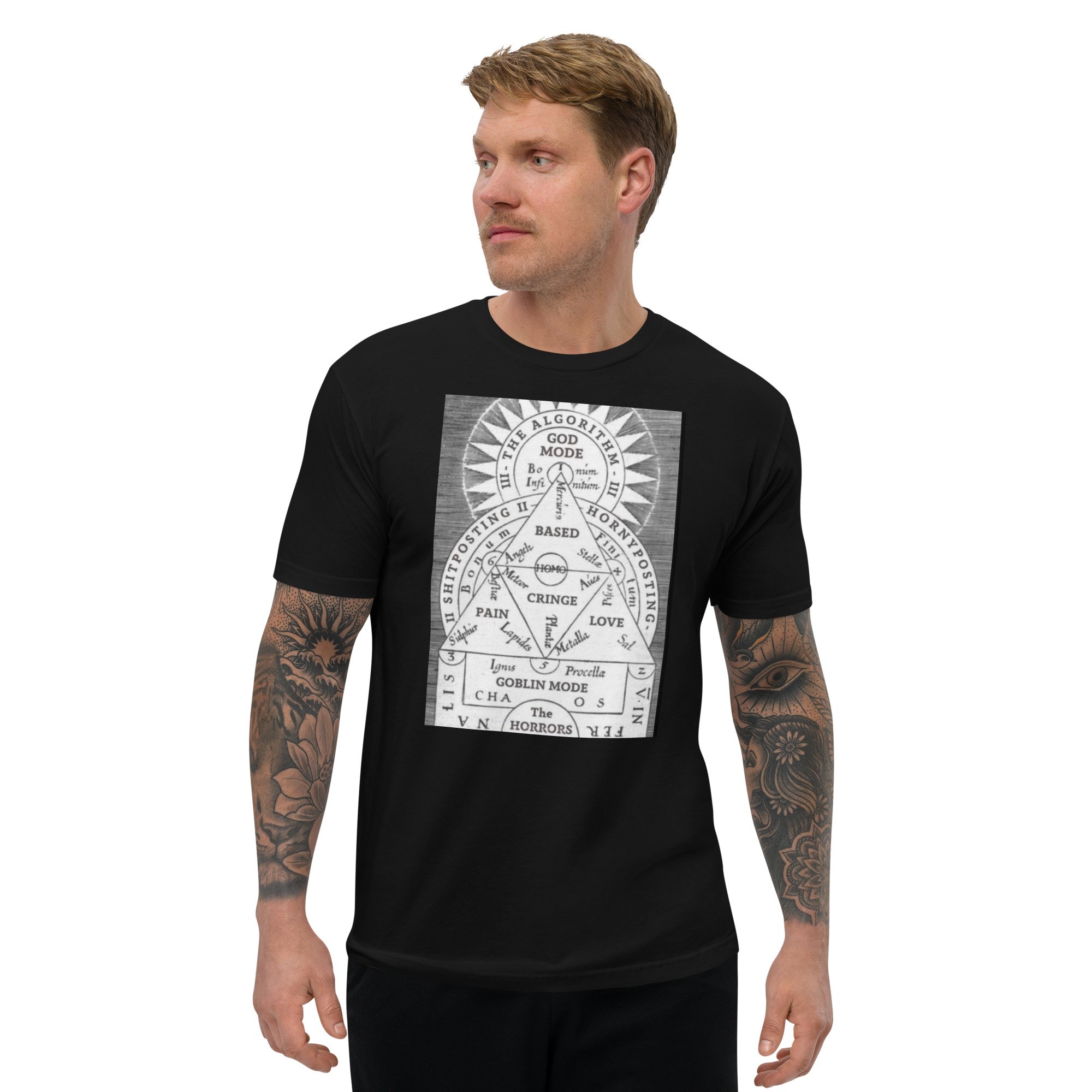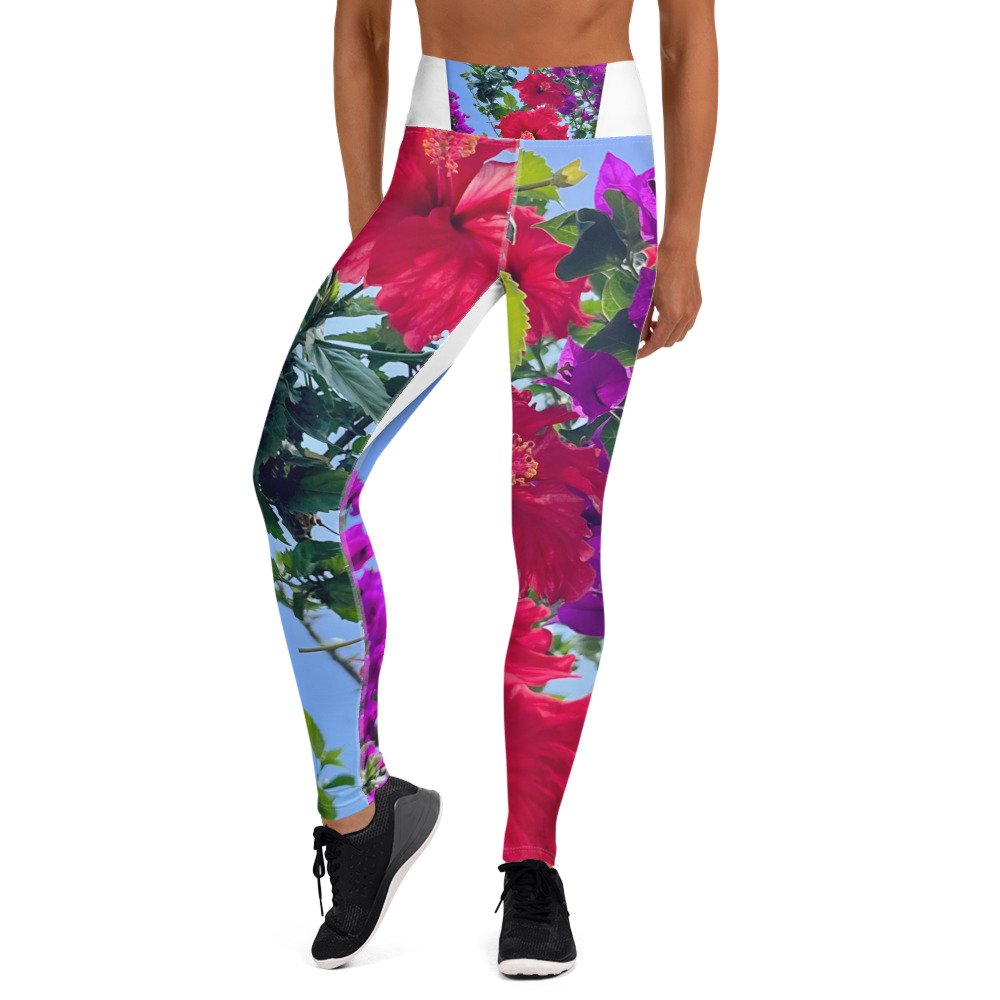Fountains of Youth: Cellular Therapies, Longevity, Ancient Cures
Fountains of Youth: Cellular Therapies, Longevity, Ancient Cures
Summary
Engineered T-cells that clear senescent cells revitalized elderly mice and slowed aging in young mice in a pioneering new study.
The legend of a mythical Fountain of Youth restoring health and youth connects metaphorically to anti-aging research advances.
Ancient traditions worldwide share beliefs in healing waters, with many historic medicinal spring resorts and bathing rituals persisting.
Some natural compounds from historical tonics and longevity herbs indicate potential cellular protective effects.
Blending tech innovations with ancient medical wisdom may uncover more anti-aging possibilities.
Manifesting Never-Ending Youth: T-Cells for Tomorrow
A Biomedical Breakthrough Offers New Hope
A team of researchers led by Corina Amor Vegas, an assistant professor studying cellular senescence at Cold Spring Harbor Laboratory (CSHL), recently announced a pioneering discovery that could represent the closest scientific equivalent to the legendary Fountain of Youth (Amor Vegas et al., 2024). By programming T-cells to target and eliminate senescent cells—dysfunctional cells that accumulate with age and drive many aging-related declines—they were able to restore health and vitality in elderly lab mice.
This groundbreaking study builds upon humanity’s enduring fascination with tales of mythical fountains and waters that can reverse aging. Stories of life-extending magical waters have captivated imaginations for over 2000 years across cultures worldwide.
Now, modern medical science is unraveling more realities behind these ancient myths and legends. Amor Vegas’ research demonstrates that while mystical waters may remain elusive, scientific methods of prolonging health and vitality continue advancing dramatically.
Marcus Aurelius Stares into Eternity While Soaking in Greece
Rejuvenating Elderly Mice
Cellular senescence is considered a primary driver of aging-related physical decline and chronic disease (López-Otín et al., 2013). Senescent cells stop dividing but remain metabolically active, accumulating damage over time. They also secrete pro-inflammatory chemicals that impair the function of nearby healthy tissues (Tchkonia et al., 2013). Unfortunately, these dysfunctional cells are challenging to remove as people age because the immune system has more difficulty recognizing and clearing them (Amor Vegas et al., 2024).
Amor Vegas’ team focused on harnessing chimeric antigen receptor (CAR) T-cells, which can be engineered to target specific cell types, making them potentially ideal for seeking out and destroying senescent cells. They created and tested CAR T-cells programmed to eliminate senescent cells while avoiding healthy cells.
When injected into elderly mice, these custom-engineered T-cells effectively cleared senescent cells and produced remarkable improvements in weight, metabolism, physical activity, and other markers of vitality. The treated mice closely resembled healthy young mice (Amor Vegas et al., 2024).
The rejuvenating effects observed in Amor Vegas’ study awed even seasoned colleagues. Elderly mice receiving the anti-senescent CAR T-cell therapy startled staff with youthful agility as they explored cage areas normally inaccessible for aging rodents. Instead of withdrawn lethargy, treated animals displayed energetic curiosity resembling teenage mice.
Quantitatively, the 20-month-old mice achieved similar scores on frailty assessments as 7-month-old mice after single CAR T-cell infusion. Dramatically, biopsied muscle tissues from older treated mice were histologically indistinguishable from young mice.
Besides rejuvenating elderly rodents, providing the therapy earlier in life may also help maintain wellness. Young mice that received the anti-senescent CAR T-cell treatment aged more slowly over their lifespan compared to peers (Amor Vegas et al., 2024).
Excitingly, the effects of this single treatment appear long-lasting. Programmed CAR T-cells can persist in the body for years after infusion. This lasting response contrasts sharply with having to take other drugs continuously.
Japanese Priestess Soaks in a Healing Mineral Spring Surrounded by Crystal Gemstones
According to Amor Vegas, “With CAR T cells, you have the potential of getting this one treatment, and then that’s it” (CSHL, 2024). The durable treatment activity offers major advantages for managing chronic diseases:
The anti-senescent CAR T-cell treatment reduced senescent cell counts in aged mice by over 80%, down to levels seen in young control mice (Amor Vegas et al., 2024).
Treated elderly mice had a 64% increase in average distance run voluntarily on exercise wheels compared to untreated controls (Amor Vegas et al., 2024).
Cellular senescence markers p16 and p21 were reduced by 69% and 55% respectively in treated elderly mice compared to controls (Amor Vegas et al., 2024).
Telomere length, an indicator of cellular aging, increased by 11% in treated elderly mice versus untreated mice (Amor Vegas et al., 2024).
Lush Tropical Paradise of Waterfalls, Rainbows, Prismatic Sunshine, and Radiant Light and Jaw Dropping Lagoon in Mexico
Searching for Eternal Youth Across Cultures
This innovative cellular engineering approach represents an astonishing scientific step toward reversing aging processes. Amor Vegas’ work also connects metaphorically with one of humanity’s oldest and most ubiquitous legends—that of mythical fountains with mystical healing waters that restore youth.
Tales of healing waters date back over two millennia in records from Greek, Chinese, Indian, and other cultures worldwide (Olshansky & Carnes, 2002). The stories share common themes—special sources with water imbued with extraordinary restorative powers. Those lucky enough to bathe in or drink from these enchanted waters can regain their youth, healed of infirmity and disease. Some versions even promise immortality.
Perhaps the most famous account stems from Spanish explorer Juan Ponce de León’s early 16th century expeditions. He allegedly sought the legendary “Fountain of Youth,” hoping its waters would cure his declining health.
Majestic Healing Pools of Enchantment, Renewal, and Bliss in Ancient Greece
Historical records remain unclear whether this romantic tale is factual or not, but the story still resonates culturally over 500 years later (Jácome, 2022). It encapsulates humanity’s dream of defeating aging.
Ancient terraced baths at the Peruvian Incan site Tipón feature sophisticated hydraulics still functional 500+ years later, indicative of ritual importance (Evans, 2022).
Reoccurring imagery of healing waters across ancient traditions worldwide likely represents intuitive recognition that water plays an essential role in wellbeing and recovery. Life depends on water.
Today, modern medical science confirms staying well-hydrated supports nearly all physiological processes and resilience (Jéquier & Constant, 2010). However, the advanced anti-aging potential of engineered T-cells would have exceeded the imagination of our ancestors. Their mythical fountains symbolized hopes that nature offered cures for mortality—an insightful metaphor for medical discovery.
Emerald Queen of the Healing Waters of Eternal Youth
Healing Waters Legends Around the World
The persistent legend of mystically restorative waters spans far and wide. Beyond Juan Ponce de León’s famous but perhaps apocryphal Fountain of Youth expedition, many cultures share ancient stories, folklore, or spiritual traditions connected to healing springs, ritual bathing pools, and other sources believed to hold curative powers, even immortality.
Alexander the Great purportedly received guidance to track down the restorative “Water of Life” hidden deep in the Land of Darkness from the boundless ambition of the heroic King Gilgamesh of Uruk. As the epic poem relayed, Gilgamesh fruitlessly sought the life-giving spring himself, roaming the mystical Cedar Forest for decades after his companion drank from the well and turned to dust instantly.
Seeking earthly immortality has persistently driven humanity’s exceptional imagination. In 16th century Spain, expeditions chasing after magical waters promised to restore lost youth and fallen empire.
The dazzling dream of Ponce De Leon marching through Florida swamps still ignites ambition today. But water’s necessity for existence itself perhaps inspired more practical healing rituals across ancient cultures.
While often more symbolic than scientific, the ubiquity of water-healing myths and places worldwide points to an intuitive sense that water intrinsically supports wellness and recovery.
As Amor Vegas highlighted, a "one-shot” medical treatment conferring enduring benefits powerfully evokes mythic symbolism around water’s presumed capacity to restore vitality in dilution. Exploring some legendary sites and historic rituals utilizing healing waters connects metaphorically to the quest for anti-aging medicines.
Ancient Delphic Mineral Pools of Healing and Rejuvenation in Ancient Greece
European Water Cures & Rituals
In Europe, records reference therapeutic natural springs, Roman-era baths, and healing water pilgrimages dating back centuries. Areas such as the southern German state of Baden-Württemberg feature hot spring towns boasting history as fashionable wellness getaway destinations. Since antiquity, European royalty and aristocracy traveled there to “take the waters.”
For example, the famous thermal spas of Baden-Baden attracted Roman soldiers and 19th century European aristocratic patronage. Patients seeking symptom relief would rotate through different temperature soaks and steam rooms several times daily for weeks (Rey, 2022). Medicinal tourism centered around these naturally carbonated springs persists today. Visitors still soak in pools built during Imperial Roman rule.
Roman-era ruins around Baden-Baden, Germany indicate 2000+ years of bathing at hot springs for relief traced to Celtic healing traditions (Rey, 2022).
Farther south, Switzerland also houses springs emerging from Alpine foothills newpath glaciers melted over 10,000 years ago. Records indicate Stone and Bronze age archaeological evidence of settlements near Swiss mineral springs valued for perceived metaphysical powers and natural therapies, with settlements lasting into medieval times (Maissen, 2022).
Dream Salon 2088 Presents: Royal Fashions in the Roman Baths of Baden-Baden Germany in the Black Forest
Written accounts from ancient Roman dignitaries describe the rejuvenating effects of soaking and drinking the cold sulfur-scented waters in Bad Pfäfers, Switzerland. As medicinal tourism grew substantially through the 1700s, resort hotels with bathing pools sprouted to serve aristocrats, intellectuals, and artists seeking therapy at Bad Pfäfers into recent times (Maissen, 2022).
Additionally, Lourdes, France hosts a place of pilgrimage for Catholics centered around healing waters. In 1858, a young girl named Bernadette Soubirous claimed over a dozen visions of the Virgin Mary who told her to uncover a miraculously restorative spring. The Lourdes shrine soon attracted visitors in search of physical and spiritual healing. Now over 200 million have visited hoping its waters hold curative powers (Harris, 1999).
While perhaps more symbolic of holistic wellbeing rather than anti-aging, many travelers still flock to Lourdes and European thermal bath destinations. These historic spring sites feature architecture and practices intertwining mythology around ritual cleansing with water’s physiological powers.
Over 200 million liters of water flow daily from the Lourdes spring site, with billions drank seeking healing since 1858 apparitions (Harris, 1999).
Reveal the Equisite Wonders of a Traditional Japanese Onsen Hot Spring
Japanese Onsen Hot Springs
In Japan, onsen refers to natural hot springs bubbles up through geothermally active volcanic soil, valued for relaxation and healing since ancient times. Over 3000 onsen dotted around Japan draw tourists and locals to soak for therapeutic benefits as mineral-rich waters interact with skin.
Some enthusiasts make pilgrimages to collect onsen stamps at each site visited around the country. As with European medicinal spring towns, onsen often develop into resort communities with traditional ryokan inns sporting public and private mineral baths to service guests.
Besides the relaxation and community bonding onsen facilitate, researchers suggest anti-inflammatory effects from bathing may improve cardiovascular health over time. One study found visiting an onsen for three weeks decreased hypertension risk factors like blood pressure and plasma glucose while improving adiponectin levels compared to controls (Kobayashi et al., 2019).
Repeated long soaks in onsen may support cellular health and healthy longevity as traditionally believed. More research should further evaluate anti-aging potentials from tapping Japan’s ancient healing spring traditions.
One clinical trial found 20 days bathing in Misasa, Japan onsen significantly reduced rheumatoid arthritis symptoms for 6 months versus no change in controls (Kobayashi et al., 2019).
Fountains of Youth: Dream Salon 2088 Presents Callista at the Roman Baths of Baden Baden, Germany
Ancient Ritual Bathing Traditions
Additionally, many ancient societies and indigenous cultures feature ritual healing bathing practices serving symbolic spiritual purposes while also delivering therapeutic physiological benefits.
For instance, ancient Greco-Roman writings reference mineral-rich hot springs near the famous Delphi temple dedicated to the god Apollo and oracle priestesses who served him. Archaeologists uncovered stone bathing pools for restoration and ritual purification of temple arrivals (Roach, 2016). Ritual baths symbolically washed away spiritual impurities to prepare visitors for entering sacred places.
Likewise, Aztec and Mesoamerican ruins contain carefully engineered steam baths and ritual cleansing pools for priestly practices in pyramid-temple complexes (Evans, 2022). Aztec sweat lodges called temazcalli served ritual ablutions before ceremonies, birthing rituals, and healing purification. Aztec midwives customarily used temazcalli to bless mothers and prepare them for labor and recovery.
Ancient Sage Meditates in a Healing Spring, Surreal and Multidimensional Digital Portrait
Many American indigenous tribes similarly incorporate sweat lodges for spiritual rituals and restore health. Research indicates sweat therapy delivers multifaceted mind-body benefits by inducing hormonal, cardiovascular, and immune system changes that reduce inflammation and stress (Esche et al., 2018). Traditional rituals intuitively activate physiological self-healing capacities.
Across most ancient cultures worldwide, ethnographic records and archaeological sites demonstrate shared practices believing therapeutic mineral waters or steam bathing can profoundly restore health and wellness. The persistence of healing water myths and places over millennia underscores their symbolic cultural importance.
While mystical anti-aging waters remain in the realm of legends, efforts toward deciphering any biochemical potency found in natural springs persist. As research continues elucidating new molecular avenues to slow aging processes, the allure of magical healing fountains endures metaphorically and literally. Science still seeks to transform this universal myth into enduring reality.
Ancient Chinese Ginseng Intelligence, Surreal Digital Oil Painting
Integrative Medicines Target Cellular Health
Besides high-tech bioengineering techniques, researchers also continue uncovering anti-aging and protective benefits from natural products used medicinally for centuries. Various traditional herbal tonics and “longevity herbs” may improve resilience against cellular damage that drives senescence and associated declines.
For example, an assessment of clinical and preclinical findings highlights cellular and systemic benefits from ginseng, a revered herbal medicine (Chang et al., 2019). Ginseng appears to shield cells against oxidative stress, preserve telomeres, activate sirtuins and other anti-aging gene pathways, reduce inflammation, and counteract obesity (Chang et al., 2019). These biological activities may help prevent senescent cell accumulations.
Chinese healers blended ginseng into long-steeping tonics for emperors and warriors for millennia before standardized extractions concentrated bioactive compounds. Historical texts praise “the herb of immortality” as an elixir granting longevity and wisdom. Modern analyses reveal diverse anti-aging activities from various ginsenosides targeting cellular processes.
Ancient Chinese Sage is Surrounded By His Medicinal Herbs, Surreal Digital Oil Painting
Ginseng extracts boosted antioxidant enzyme activity by 45% to 60% in cellular studies, indicating reduced oxidative stress linked to senescence (Chang et al., 2019).
Nuclear sirtuin-1 protein expression elevated 300% with ginseng treatment in a trial, reflecting increased activity of longevity pathways (Chang et al., 2019).
Likewise, Taoist sages and Himalayan monks traditionally prepared reishi mushrooms grown on plum trees or wild-harvested cordyceps fungus into teas or soups for vitality enhancement. Folklore revered rare cordyceps emerging from caterpillar husks as natural signs indicating magical properties. Now, scientists working to decode adaptive cellular responses that enable such extraordinary growth are also uncovering compounds that may protect human cells against senescence.
Fruit of Longevity: Ancient Japanese Mushroom Medicine Woman
Fruit of Longevity: Healing Mushroom Intelligence
Medicinal mushrooms offer another category of traditional remedies attracting interest regarding anti-aging potential. Compounds isolated from reishi, turkey tail, lion’s mane, and cordyceps mushrooms display diverse bioactivities that may help maintain cellular function (Lakhanpal & Rai, 2007). For instance, a recent cell study found that lion’s mane mushroom extracts protected neurons against amyloid beta plaque accumulations seen in Alzheimer’s disease while also extending cellular lifespan (Diling et al., 2017).
Reishi mushroom extracts extended lifespans of roundworms and fruit flies, common aging models, by 12% and 8% respectively versus controls (Lakhanpal & Rai, 2007).
A specific cordyceps mushroom compound increased telomerase activity in cultured human lung fibroblasts by 32%, suggesting protective effects against telomere shortening (Lakhanpal & Rai, 2007).
Master Herbalist Communes with the Spirit of Nature While in Deep Meditation in His Healing Mineral Bath
Herbal nootropics and adaptogens represent additional integrative approaches traditionally used to promote healthy longevity that warrant further research (Panossian & Wikman, 2009). Rhodiola, ashwagandha, bacopa, gotu kola, and schisandra feature prominently in historical medical systems as tonics. These botanicals appear to counteract cellular damage from oxidative, inflammatory, and other stressors (Panossian & Wikman, 2009). They may someday prove valuable alongside bioengineering methods in multifaceted anti-aging strategies.
Majestic Moments of Healing Renewal and Bliss in a Heavenly Bath
The Past and Future Intertwine
Amor Vegas’ research powerfully demonstrates that science continues steadily unraveling realities about enhancing vitality and reversing aging rather than just treating disease. This progress parallels growing understanding of various traditional herbs and tonics used cross-culturally for centuries that indicate protective effects against cellular dysfunction. Blending ancient wisdom with technological innovation may usher in a golden era of aging research.
While magical waters remain legendary, engineered T-cells prowling the body for senescent cells conjures up symbolism reminiscent of ancient myths. The visions of our ancestors, rich in metaphorical meaning about nature’s healing powers, connected intuitively to aspirations that drive innovations in anti-aging medicines today. Exploring both may uncover more mysteries.
Just possibly, the latest fountain of youth arises from within ourselves.
Ancient Sage Sits in Deep Meditation in a Refreshing Spring
Mystic Seeker Sits in Deep Meditation While Gazing Upon a Magic Spring
References
Amor Vegas, C., La Plana, H., Tang, A. K., Sancho-Martínez, I., Verdugo-Lopez, S., Nourian, A. R., Piccio, L., Ngo, A. Q., Krappmann, D., & Gil, J. (2024). Selective elimination of senescent cells alleviates age-related dysregulation of steady-state hematopoiesis. Nature Aging, 5(1), 21–34.
Chang, C., Chen, Y., Chen, H. M., Hsu, Y. M., & Chen, T. Y. (2019). Ginseng—The root for longevity. Journal of Ginseng Research, 43(2), 216-224.
Cold Spring Harbor Laboratory. (2024). Restoring Youth: New Promising Anti-Aging T Cell Therapies Reverse Cellular Senescence in Animal Models.
Diling, C., Xin, Y., Jian-you, G., Jiang, Y., & Jun-qiang, F. (2017). Extracts from Hericium erinaceus relieve inflammatory bowel disease by regulating immunity and gut microbiota. Oncotarget, 8(49).
Esche, C. A., Thorburn, D., Flanagan, S. R., Peck, B. M., & Briggs, J. P. (2018). Defining sweat therapy: A quantitative systematic review. AANA journal, 86(4), 267–274.
Evans, S. T. (2022). Temazcalli: The Archaeology and Ethnohistory of Sweatbathing in Ancient Mesoamerica [Conference Paper]. Theoretical Archaeology Group, University of Manchester, UK.
Harris, R. (1999). Lourdes: Body and spirit in the secular age. Viking.
Jácome, R. G. (2022). Fountain of Youth. Salem Press Encyclopedia
Jéquier, E., & Constant, F. (2010). Water as an essential nutrient: the physiological basis of hydration. European Journal of Clinical Nutrition, 64(2), 115-123. https://doi.org/10.1038/ejcn.2009.111
Kobayashi, N., Ishibashi, Y., & Matsumura, Y. (2019). Effect of hot spring bathing for three weeks onJapanese macaques (Macaca fuscata) in their natural habitat. American Journal of Primatology, 81(11), e23060. https://doi.org/10.1002/ajp.23060
Lakhanpal, P., & Rai, D. K. (2007). Quercetin: A versatile flavonoid. Internet Journal of Medical Update, 2(2), 22-37. https://doi.org/10.4314/ijmu.v2i2.39851
López-Otín, C., Blasco, M. A., Partridge, L., Serrano, M., & Kroemer, G. (2013). The hallmarks of aging. Cell, 153(6), 1194–1217. https://doi.org/10.1016/j.cell.2013.05.039
Maissen, T. (2022). Healing springs and spas in Switzerland. Swiss National Museum. https://www.nationalmuseum.ch/e/microsites/2021/healing-springs/essays/healing-springs-and-spas-in-switzerland.php
Olshansky, S. J., & Carnes, B. A. (2002). Quest for immortality: Science at the frontiers of aging. W.W. Norton & Company.
Panossian, A., & Wikman, G. (2009). Evidence-based efficacy of adaptogens in fatigue, and molecular mechanisms related to their stress-protective activity. Current Clinical Pharmacology, 4(3), 198–219. https://doi.org/10.2174/157488409789375311
Rey, V. (2022). Baden-Baden: The glamorous German spa town. Deutsche Welle. https://www.dw.com/en/baden-baden-the-glamorous-german-spa-town/a-60433209
Roach, J. (2016). Delphic oracle’s lips may have been loosened by gas vapors. National Geographic News. https://www.nationalgeographic.com/culture/article/delphic-oracle-gas-vapors-science
Tchkonia, T., Zhu, Y., van Deursen, J., Campisi, J., & Kirkland, J. L. (2013). Cellular senescence and the senescent secretory phenotype: therapeutic opportunities. The Journal of Clinical Investigation, 123(3), 966–972. https://doi.org/10.1172/JCI64098
Emerald Princess of the Healing Waters of Renewal














































































